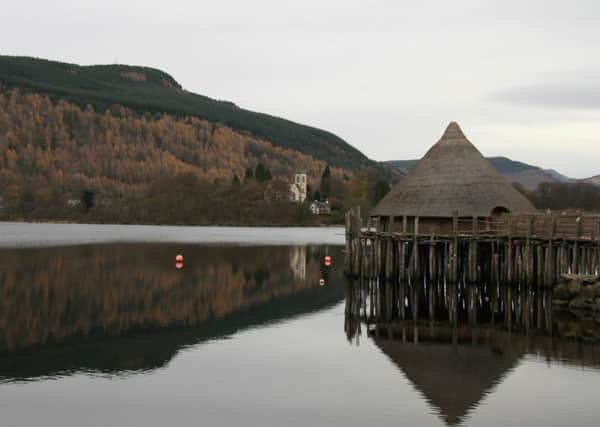Fragment of 2,500-year-old musical instrument found in Scottish loch


The notched piece of wood, believed to be the bridge from a plucked string instrument, was found near Fearnan on the banks of Loch Tay in Perthshire.
It is thought to be a piece of one of the earliest musical instruments ever found in Western Europe.
Advertisement
Hide AdAdvertisement
Hide AdThe Scottish Crannog Centre at Kenmore, which tells the story of Scotland’s ancient loch dwellers, has launched an investigation into the origins of the instrument following a £34,100 award from the National Lottery.
The research aims to discover more about Iron Age music in Scotland and its place in communities of the time.
Mike Benson, director of the Scottish Crannog Centre, said: “We are delighted to have received this grant from the Heritage Lottery Fund.
“We’re really looking forward to working alongside groups and communities to explore and tell the story of the bridge.”
Cultural historian Dr John Purser described the remains of the instrument as “a find of major and international significance” and is thought to be a contemporary of a bridge found at High Pasture Cave on the Isle of Skye in 2012.
Lucy Casot, head of Heritage Lottery Fund (HLF) Scotland said: “Uncovering where, and how, our ancestors lived helps communities understand their own history and identity.
“Thanks to National Lottery players, HLF is able to support projects such as The Bridge That Connects Communities 2,500 Years Apart that produce tantalising clues about the past.”
A replica of the bridge has been produced by Marco Gilardi of the University of Western Scotland.
Advertisement
Hide AdAdvertisement
Hide AdArchaeologists have been working at Loch Tay studying the sunken remains of crannogs - Iron Age wooden houses supported over the water by stilts - with tree ring analysis of highly preserved wood illuminating the time line of the loch’s occupation.
Last year, experts can say people were living on Loch Tay in Perthshire as late as 355BC.
